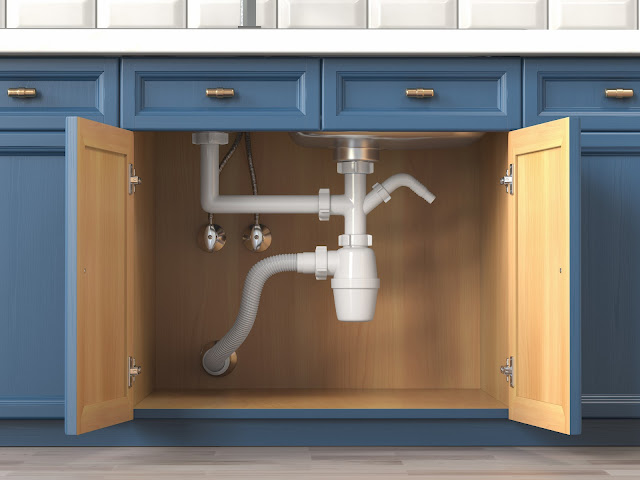A well-functioning plumbing venting system might not make the list of things you think about daily, but it quietly handles much wastewater management. Proper bathroom plumbing venting ensures that your drains flow smoothly and that unpleasant odors stay out of your home. But what happens when your plumbing ventilation system hits a snag? Slow drains, gurgling noises, and foul smells could be signs you need to inspect the plumbing ventilation system in your home.
This
guide will help you get hands-on with understanding and checking your
bathroom's plumbing venting system. By the end, you'll be equipped with
practical steps to inspect, maintain, and even know when to call the plumber.
The Importance of Bathroom Plumbing Venting
Your
bathroom's plumbing venting system allows air to flow through the pipes and
prevents the formation of a vacuum that would trap water. This system carries
sewer gases out of your home, typically through a pipe that exits the roof.
Without proper venting, your plumbing system can't work efficiently, and you
may encounter blocked drains, water backing up, or even gas leaks.
Spot
the Signs of Venting Problems
A
blocked or damaged venting system often gives away its problems loudly
and clearly. Look out for these common signs of trouble with your bathroom
plumbing venting system for any issues with air pressure:
- Gurgling toilets: It can indicate a problem with the ventilation
system. That bubbling sound when you flush could signal poor airflow
in your pipes.
- Slow Drains: If water slowly drains from your sink, tub, or shower,
a clogged vent might be the culprit affecting the drainage.
- Unpleasant Odors: Smelling sewer gas? It could be escaping due to a
faulty ventilation vent.
- Standing water: It can lead to drainage issues in sinks, tubs, or
showers, which can point to venting problems.
- Fixtures Acting Up: If using one fixture (such as flushing a toilet)
affects another (e.g., water rising in your sink), you might have a
venting problem.
Step-by-Step Guide
to Inspecting the Vent System
Step 1 Inspect the
Vent Pipe on the Roof
The
main vent pipe will likely exit your home through the roof. Gently climb onto
the roof and check the air vent pipe for blockages.
- Check for clogged plumbing
blockages, such as leaves, bird nests,
or debris clogging the pipe.
- Inspect for Damage. Are there cracks, corrosion, or other signs of wear?
- Use a Flashlight if needed, and shine a light inside to look deeper
into the pipe.
Pro
Tip: Be cautious of stagnant water, as it
may cause unpleasant odors and potential methane accumulation. If climbing up
seems risky, use binoculars to inspect the area visually.
Step 2 Listen for Gurgling Sounds
Run
water through your bathroom plumbing fixtures to check for blockages—bathroom
fixtures one at a time. If you hear gurgling in one fixture while using
another, it's a classic sign of improper venting that could lead to nausea and
other issues.
Step 3 Feel for Airflow
Hold
your hand above the vent pipe on the roof. If no airflow is present, that might
signal a blockage inside the pipe.
Step 4 Perform a Water Test
For
this test, you'll need a garden hose to check the sink drain and ensure it
doesn't contribute to stagnant water.
- Gently slide the hose into the
vent pipe, and then give the water a turn to get things flowing!
- Keep an eye on the water flow.
If it overflows or drains sluggishly, there's likely a clogged plumbing
issue deeper in the venting system.
- Note any leaks during the test,
which could indicate damage to the drain pipe.
Caution: If water backs up into the pipe, proceed carefully to
avoid flooding the vent or roof.
Tips for
Maintaining Your Venting System
Avoid
venting issues altogether with these simple maintenance tips:
- Keep the Roof Clear. Ensure leaves, debris, or snow don't block your vent
pipe.
- Schedule Annual Inspections: Check for visible damage or blockages in the drain
pipe at least once a year.
- Install a Vent Screen: Adding a screen over the vent pipe can prevent debris
and animals from causing clogs.
- Flush with Water Seasonally: Use a garden hose to flush the vent pipe to clear
small debris gently.
How to Handle
Repairs
If
you've identified an issue with your plumbing fixtures or vent, as a
homeowner, you may wonder if it's something you can fix yourself. For minor
issues:
- Remove Blockages From the vent pipe using a plumber's snake or auger.
- Seal Cracks Using plumbing epoxy or repair tape.
- Replace Parts Like damaged pipe sections if you feel comfortable
doing so.
However,
extensive clogs or damage often require professional help.
Knowing When to
Call a Plumber
If
your ventilation problem persists after a thorough inspection, it may indicate
a clogged plumbing vent that needs attention. A DIY inspection can sometimes reveal issues with the air vent that
must be addressed. After cleaning, it's time for the homeowner to call in a
pro. Severe vent clogs, complex repairs, or damaged connections are best
handled by a licensed plumber with the proper tools and expertise to ensure
everything runs smoothly. Don't forget plumbing issues left unresolved can
result in higher water bills or structural damage to your home.
Clear
Pipes, Clear Mind
Your
bathroom
plumbing venting system is an unsung hero, keeping your home
functioning smoothly. By learning to spot problems early, performing regular
maintenance, and understanding when to seek professional help, you ensure its
longevity and save yourself future headaches.
Have
you checked your venting system lately? Follow the steps above to give it some
love. If you're dealing with ongoing plumbing challenges, don't hesitate to contact
your local consulting plumbing experts. They can help you effectively manage
any issues with your toilet tank and provide plumbing and
ventilation assistance.

Comments
Post a Comment